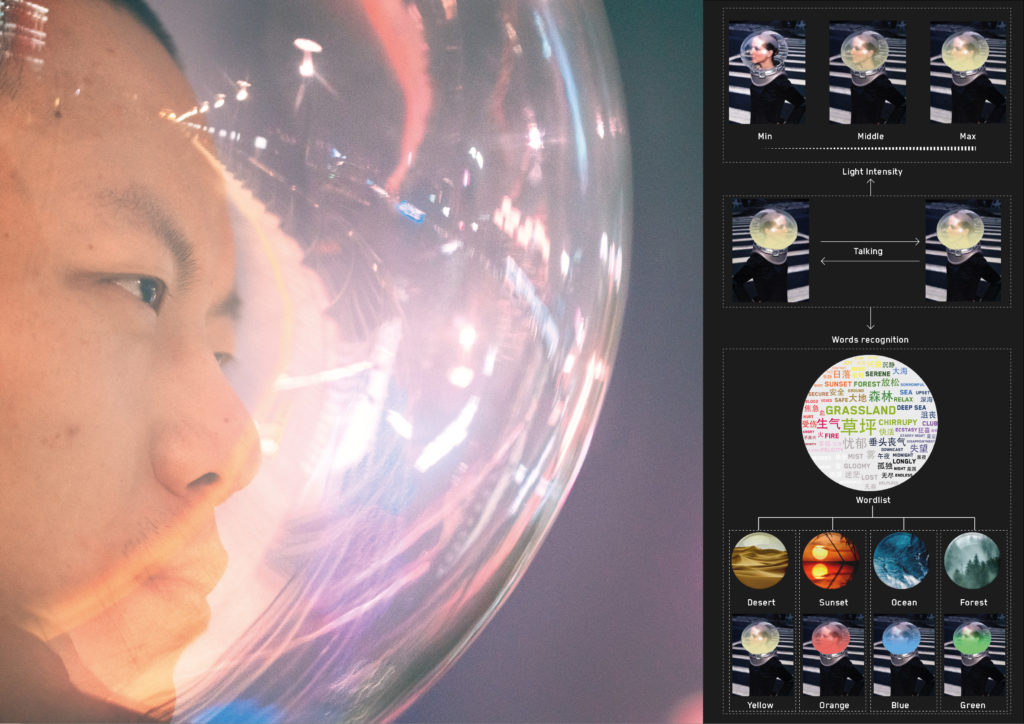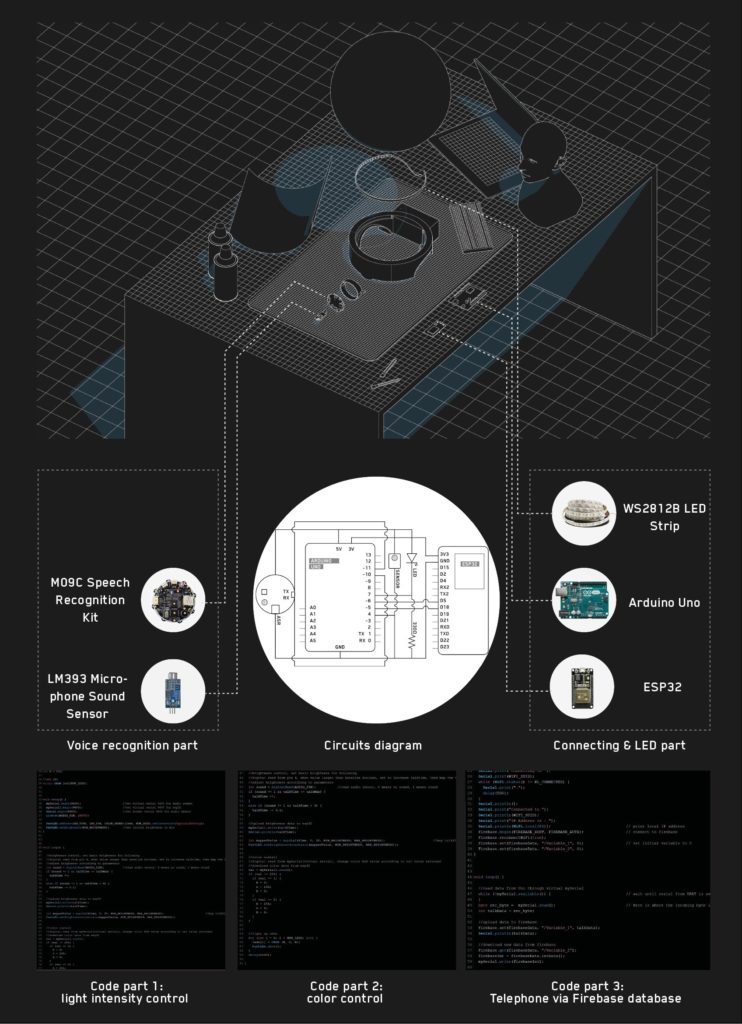GSD VIS-2223: Digital Media: Telepresence, Empathy, and Spatial Immersion (Fall 2020-21)
Students: Haochen Zhang, Jinzi Wei
Instructors: Allen Sayegh, Humbi Song


[youtube https://www.youtube.com/watch?v=rDlBYq9QhCM]
Project Statement: As people are isolating themselves at home during this pandemic, enhancing people’s sense of empathy and feeling became the motivation for us to design this installation.
The talking machine should be able to achieve two goals.
- First is letting the person wearing it focus more on the conversation and isolate themselves from their surroundings.
- The second is helmet can interact as the conversation goes on and create scene synchronization between users.
To achieve the first goal: We tried materials that are both transparent and high-reflective. Adhering reflective film or coating on the acrylic helmet can make the outside landscape completely being reflected on the helmet. Wearer’s face behind the helmet will be almost invisible. In the meantime, the wearer can see the surroundings clearly. And after turning on the inner light in the helmet, the wearer’s face will emerge, wearer itself will see the inner light changing and its face. This will let the wearer focus on the ongoing conversation and scenes created by inner light, while isolating themselves from the environment.
The next job is creating digital interaction about the conversation. We use Keywords Recognition to link different scenes with it, and let the LED color in the helmet change with the dialogue. In this way, we tried to help wearers synchronize their feelings. For example, the helmet can detect the word “ocean” during a conversation and the LED will change to blue, the space inside the helmet will change to blue, and this will help wearers feel the same when the conversation is going on about the ocean.



